How advancements in digital identification are streamlining KYC processes and enhancing transaction security.
With so much of the world’s transactions happening digitally, many know your customer (KYC) regulations are becoming more difficult to comply with due to outdated technology. Manual verification and form submission is slow and prone to errors.
It also creates friction that hurts sales and conversions. User experience in payments has become important for all businesses, and the friction of ID verification can negatively impact that experience.
Today, new digital verification methods and tools are entering the market that can help change the landscape of KYC compliance and improve the overall experience for both users and financial companies.
With digital verification, the entire process and compliance workflow are streamlined for both the customer and the financial institution collecting information. Beyond streamlining the process, digital identification verification is more secure and less prone to fraud or illicit manipulation than manual methods.
We’ll explain how digital identity verification is changing the world of KYC and payments in detail to help you understand how this technology works. We’ll also cover how you can implement digital identity verification in your workflows to fully utilize this new technology.
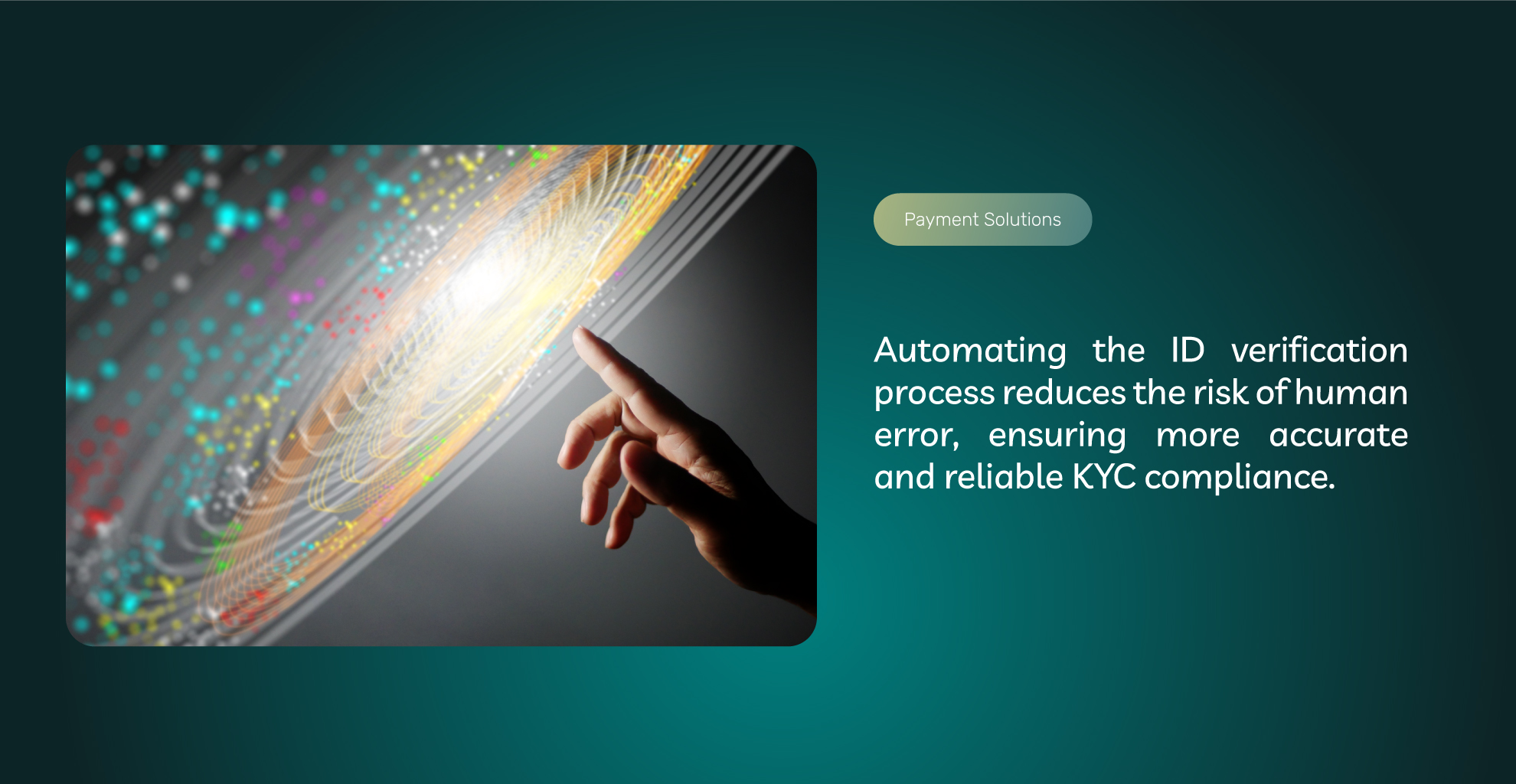
What Is Digital ID Verification?
Digital ID verification replaces traditional manual verification, using specific data points and digital “fingerprints” to allow customers to easily verify their identity. Digital ID verification can be used for payment, online banking, or ensuring compliance with regulations such as KYC. It also replaces many manual identity verification processes when confirming customer identities.
Instead of just relying on scanned documents uploaded by a customer, digital ID verification goes beyond what the customer submits. For example, a part of digital ID verification may be comparing a customer’s email address with a list of email accounts that have recently been compromised in security breaches or hacks.
A positive result when performing a check like this can be a red flag that this individual may require more scrutiny and further verification. That’s just one simple example, but digital ID verification can use hundreds of data points similar to this to build a risk profile of the individual being verified.
Below are some additional data points that are used during digital ID verification.
IP Address
The customer’s IP address is checked against known lists to determine if it is associated with any previous fraud or security issues. Simple checks also filter out any use of VPNs or other technology that sometimes fools KYC identity checks.
Browser
Since most digital ID systems are accessed via a browser, the customer’s browser contains a host of digital fingerprints to help confirm their identity and usage patterns. Anomalous browser settings or a lack of certain standard fingerprints can be a red flag and escalate the need for further verification.
Cookies
Cookies stored on the customer’s computer or device can be examined to create a profile of the individual. If this profile varies from the information submitted, it indicates an increased risk of fraudulent activity.
Related Accounts
A digital ID verification system uses browser history, cookies, and third party services to look at related accounts connected to the user’s email address and other information. Verified customers have a specific pattern of related accounts and account creation that is easy to identify.
How Digital ID Verification Differs from Traditional Verification
You’ve likely already performed traditional verification. Although you may accept documents digitally, that’s different from true digital identity verification. With traditional KYC verification, documents are submitted digitally, either through scanning or possibly a photograph using a smartphone. The digital images are then sent to you for verification.
However, each document must be sent to a separate system for processing and verification. This process is slow, labor intensive, and also inconveniences customers. If any of the documents or information is incorrect, the entire process can be delayed for days, creating further friction and frustration.
Digital ID verification performs the majority of the background identity checks. These are automated checks using some of the processes and markers we outlined in the previous section. Some are straight verification techniques, while others use machine learning and AI to spot abnormal activity in real time.
You can think of digital identity verification as an almost fully automated identity verification that replaces the manual aspects of previous verification.
Despite the added security layers, the automation means you don’t notice any increase in workload or stress on your systems. Instead, much of the work you now do manually is offloaded to the digital identity verification service.
Digital Identity Verification Is Already In Use
While this technology may seem relatively new, it is being used in various applications around the internet. If you’ve ever visited a website and encountered a Google CAPTCHA that requires you to click a small checkbox, that’s a type of digital ID verification.
While it doesn’t confirm personal identity, it uses similar digital fingerprints to ensure the user or visitor is a real individual and not a bot or bad actor. Similar methods are used for digital ID verification for financial use or KYC, with the addition of personal identification methods.
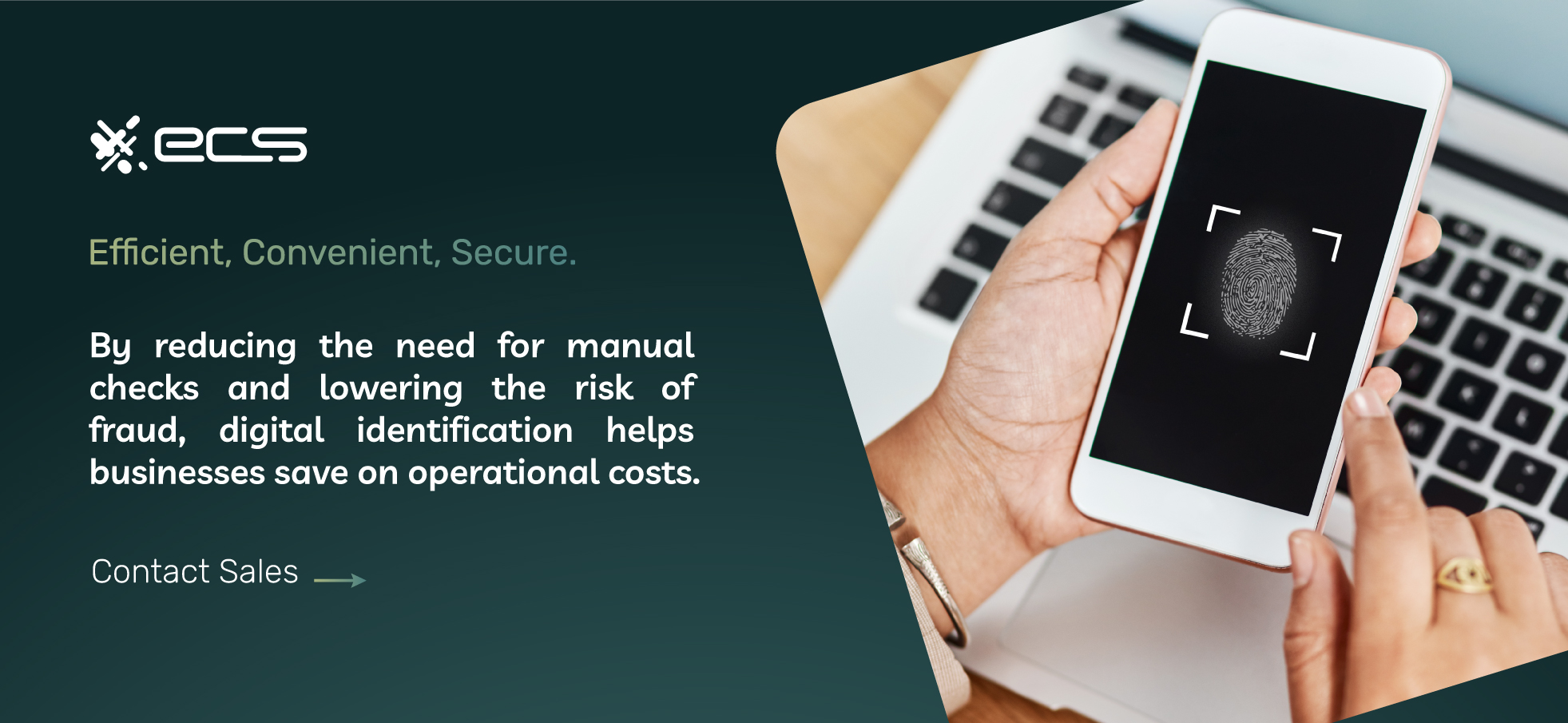
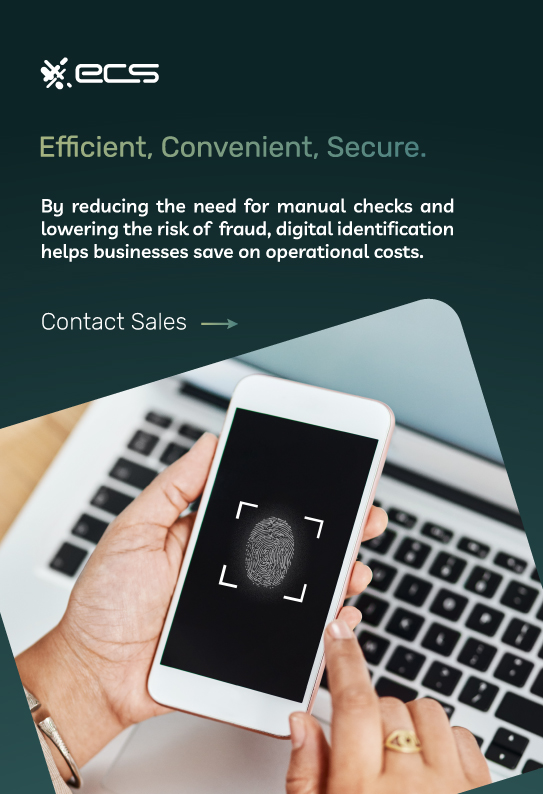
Why Is Digital ID Verification So Important?
As more transactions move to digital only, new tools are needed to keep up. Fraud, identity theft, and financial crimes are increasing as much of our personal and business activity moves online. This requires new technology and access controls for data privacy and document verification.
Digital ID verification is a solution to this problem. It is helping to fill the void left by traditional manual verification processes that are simply not agile enough to catch modern fraud or illicit activity.
Digital KYC Solutions & Compliance
KYC compliance is often a source of friction for both customers and businesses. Digital ID verification allows you to greatly automate the process beyond the simple digitalization of documents. It also helps you comply with the following three core aspects of KYC.
Customer Identification Program (CIP)
Part of compliance with CIP requires that businesses perform their risk assessment when onboarding new clients or customers. This makes it difficult for businesses as there are no set guidelines, and you have to determine your comfortable level of compliance.
Digital ID verification helps you immediately increase your compliance with CIP without adding any additional workflow elements or difficult to manage processes. Since risk assessment is such a large part of CIP, digital ID verification fits perfectly, as the process is based on over 100 risk factors for each individual.
CIP requirements also mandate that this verification takes place in a reasonable time. Once again, digital ID verification helps to speed up this process, and often, it can be completed in minutes instead of days.
Customer Due Diligence
Another core aspect of KYC deals with customer due diligence. This means you must perform various checks to ensure your customers are trustworthy, who they say they are, and not involved in risky transactions. Your due diligence requirements fall into three separate categories based on risk.
Simplified Due Diligence (SDD)
This level is reserved for low level accounts and transactions where the risk of money laundering or illicit activity is low.
Basic Customer Due Diligence (CDD)
All customers must complete this, which involves identifying and assessing risk factors associated with money laundering or other illegal transactions.
Enhanced Due Diligence (EDD)
This is the highest level of due diligence for customers with the highest risk profile. Many risk factors requiring EDD are specific to each country involved in the transaction. So, a risk factor in your native country may not be a risk factor for another business in a different country.
Digital identity verification helps with each of these, as you can immediately create a risk profile for each customer to determine their category. You will still need to perform other checks for aspects of their identity that fall outside standard digital ID verification methods.
But overall, this adds an automating layer to your compliance, saving time and money.
Ongoing KYC Risk Assessment
Another component of KYC compliance is ongoing risk assessment. This means you must monitor customers for changes in their transaction patterns, volumes, or amounts and adjust their risk profile accordingly. Ongoing risk assessment and transaction profiling are difficult, and while automated tools can help, they still require human expertise and intervention to be most effective.
However, digital ID verification during the initial aspects of KYC compliance can help you prepare your ongoing risk assessment and transaction monitoring strategy. Higher risk profiles in early ID verification processes may not have warranted increased due diligence.
However, it may have been enough to warrant closer scrutiny during ongoing transaction monitoring. This is just one example of how a holistic approach to digital ID verification using automated measures can help with overall compliance. When it comes to KYC compliance, the more accurate information you have to work with, the easier your compliance generally is.
Breakdown of The Digital ID Verification Process
As we mentioned, the digital identification process works by looking at traditional information sources and digital fingerprints. The number of unique digital fingerprints can vary per individual, but it can be as many as 100.
The process is more secure than traditional methods because most people are unaware that these fingerprints exist or what they are. This makes it incredibly hard for them to circumvent or alter in a way that tricks the system into verifying a high risk customer.
The digital verification process is also customizable. You can tailor the process to fit your clients and your current workflow. You can do this via various filters and thresholds during the verification process. For higher security, you can lower the thresholds and place more verifications on hold for further review.
If your workflow or transaction types don’t require this level of security, you can raise the thresholds to remove false positives and add an additional workload for your KYC compliance team.
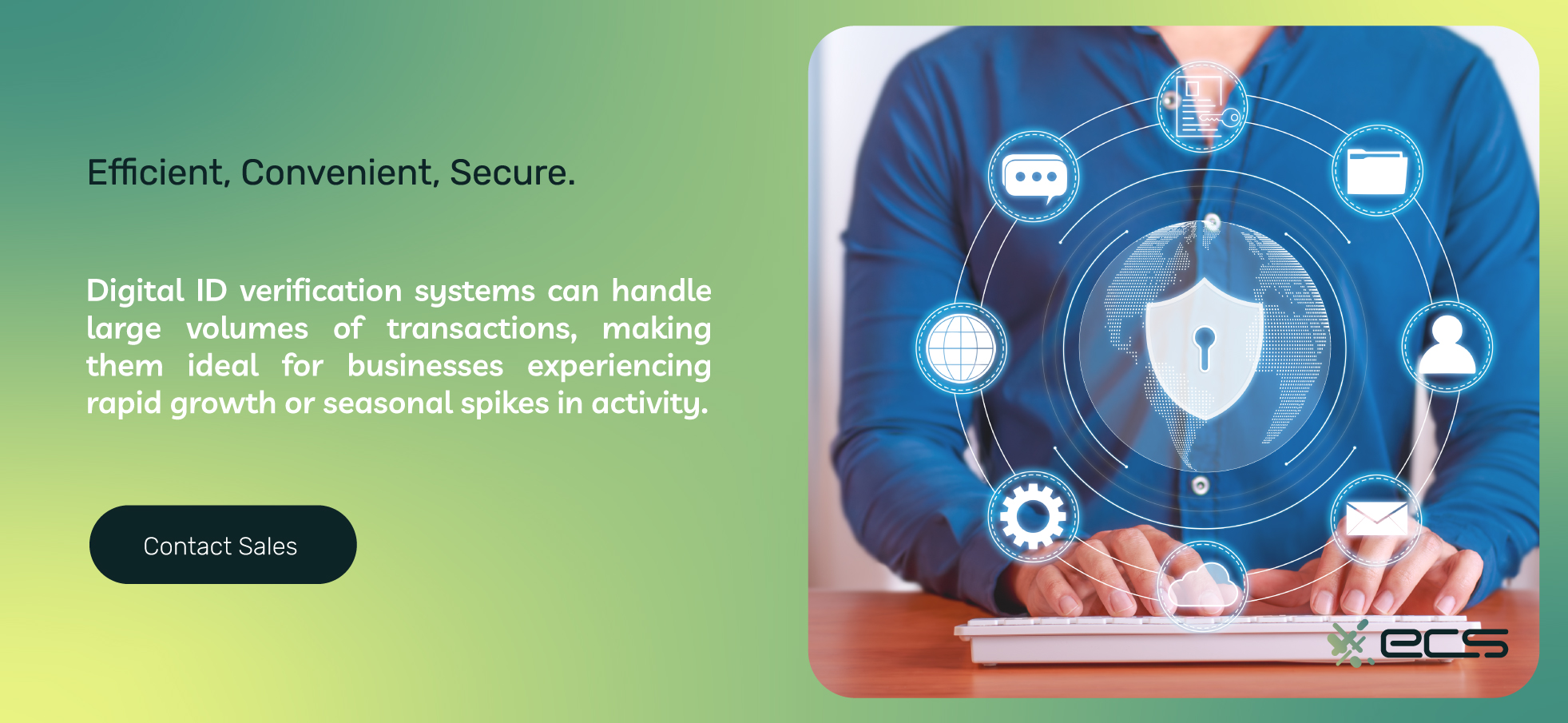
Digital Identity Verification Checks
In this section, we’ll cover some specific checks involved in the verification process. These are all automated and do not require you or your business to intervene. You will receive the check results and a risk assessment after the process is complete, which generally only takes a minute or two.
Digital ID Verification/Government ID
KYC compliance and financial institutions still must require a valid government ID with a unique identification number. However, digital identification can go a step further through the liveliness or selfie check.
This automated process involves a photo of a government ID along with a selfie. Automated machine learning algorithms then compare the photos to ensure they match.
Digital Fingerprints
The next step will include basic digital fingerprint analysis to ensure the person is who they claim to be and are not a risk for fraud or illicit activity. Digital fingerprints can include over 100 checks, and the exact specifics are not always made public. This ensures the integrity of the verification systems and prevents fraud against them.
Certain digital fingerprints commonly contribute to ID identification, including geolocation, browser settings, device settings, battery usage, mobile phone screen resolution, and other factors. The reason for using data such as battery usage on a device is to prevent illegal phone banks, which are sometimes used for identity theft.
Criminals operate large phone banks, utilizing hundreds and sometimes thousands of phones. These criminals then use these phones to attempt to sign up for various accounts using false identities. A common flag for these devices is that they are always plugged into a charger and never operate on battery power alone.
This is one example of a digital fingerprint that could raise a red flag. A phone that has been on a charger for days or months could be part of an illegal phone bank.
Screen resolution and other factors are similar fingerprints that can imply a device is being used illegally for fraud. Additional device fingerprinting matches IP addresses and checks for enabled privacy modes, such as incognito mode in Google Chrome browsers.
These checks can also determine whether individuals use proxies or VPNs, which poses another risk factor during identity verification.
Email Verification
Beyond just testing if an email address is valid and whether the customer has access to the account, digital identity verification goes a step further. Real time databases match email addresses to assess their risk and determine if they are compromised.
The email’s domain is also checked. If it’s a private domain, the history of the domain is examined to determine whether it’s valid or recently set up for fraud purposes. Your digital ID verification provider can use various private and open source databases for this automated process.
Phone Number Verification
Phone numbers are an important digital fingerprint and allow you to see if this user has other legitimate accounts. Mobile ID verification also utilizes phone numbers to confirm online banking identity or usage of a mobile app. Security systems check phone numbers against public and private databases to determine their connections to other accounts.
Broader Network Usage Pattern
A crucial digital fingerprint is how a specific user has recently interacted with other verification systems. A sudden spike in interaction with various financial institutions or verification systems in a short period of time is a risk factor for fraud.
Certain patterns are deemed normal, such as when someone is making a large purchase or setting up investment accounts. So, digital identification systems use this baseline to limit the number of false positives.
Machine Learning & Behavioral Analytics
Behavioral analytics are not common in security and risk assessment. Digital ID verification leverages these technologies to determine if any automated systems are being used during the customer data entry portion of verification.
Most fraud occurs at scale as criminals use sophisticated tools to automate their processes. Behavioral analytics can analyze how the customer interacts with the verification system to determine if it’s a real human or a bot. AI in identity verification is becoming more common, and its use will continue to grow.
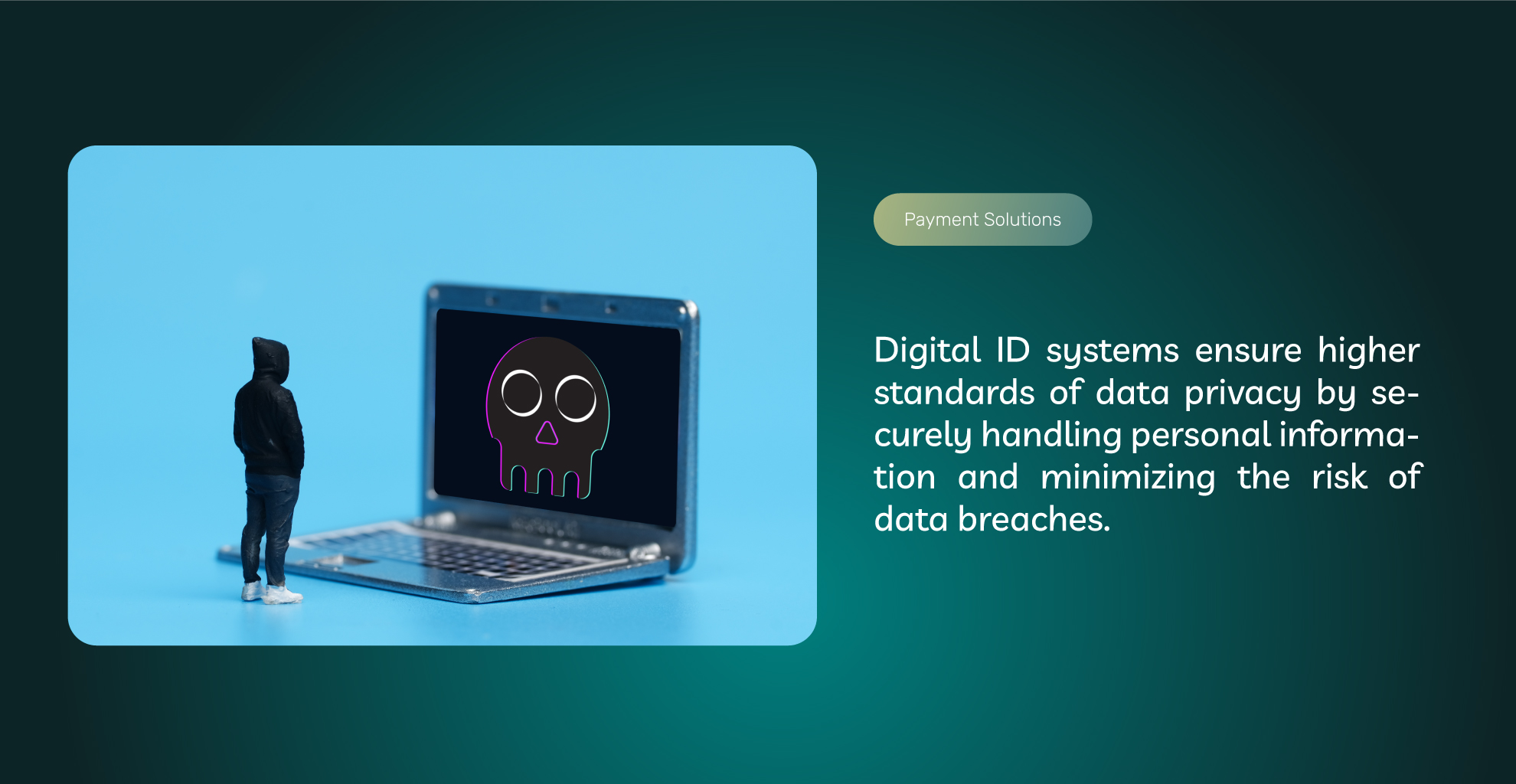
What Are The Risks Of KYC Non Compliance
The Patriot Act, enacted in 2001, initially included KYC regulations as part of the broader anti money laundering (AML) guidelines. Ever since, the Financial Crimes Enforcement Network (FinCEN) has enforced KYC guidelines. FinCEN is a bureau of the U.S. Department of the Treasury. And non compliance is a serious issue that can lead to the following consequences.
Fines
Fines are a common penalty, regardless of what led to the non compliance. The fines can be substantial depending on the nature of the non compliance and the number of incidents.
Loss of licensing or Certifications
Non compliance with KYC regulations will often put you at risk of losing various licenses related to financial transactions, banking, or financial services.
Higher Risk of Fraud
Even if KYC non compliance goes undetected, you still expose your business to an increased risk of fraud. This type of fraud can damage reputation and increase costs due to losses.
For additional help with KYC compliance, regulation technology or regtech solutions are available. Many of these solutions incorporate electronic identity verification (EIDV) and other authentication technologies to help you remain compliant.
Other Identification Measures For Online Payment Security
Depending on your business, you may require additional verification measures or optional verification for secure transactions. Besides digital identity verification, you can use several other technologies to fit your needs and maintain credit card number security in your payment processing.
Two Factor Authentication (2FA)
Generally, customers use two factor authentication or multi factor authorization (MFA) for security once they create an account. However, you can require this added layer of security for accounts to help with your ongoing verification efforts.
Multi factor authorization involves using methods in addition to just a password and login name. Commonly, users do this through an app such as Authy or Google Authenticator. The app generates a one time code, which the user enters along with their password.
Cybercriminals can’t access sensitive financial sites protected with multi-factor authorization even if they compromise an account or email because the one time code expires in under a minute.
Knowledge Based Authentication
You’ve likely come across this technology while conducting your online transactions. In knowledge based authentication, you give the user a question, and they provide the answer based on information they have previously provided or when the account opened.
These tools provide identity theft protection or fraud prevention during customer onboarding and other financial compliance situations. Common examples of knowledge based authentication are asking a customer to confirm a previous address or mother’s maiden name.
You can use this technology for ongoing verification and risk assessment. For example, if there is suspicious activity around an account or a change in transactions, it can trigger a knowledge based verification question before allowing further access.
Credit Checks
Credit checks can provide a lot of information for verification purposes. Generally, companies reserve these for larger customers or when they anticipate larger transactions. Credit checks normally require manual confirmation if the goal is to verify identity. Customers may also grow weary of credit checks unless they fully understand why and how the information will be used.
Biometric Authentication
A newer form of identification is biometric technology. Biometric identification can involve physical fingerprints, facial recognition, voice recognition or voice printing, and retinal scans to authenticate users.
Typically, companies utilize this technology to continuously verify biometric data after customers have submitted it. However, some verification firms can access public facial photographic databases and perform certain verifications during onboarding.
Blockchain For Identity Verification
Because of the inherent properties of blockchain and public leaders, they lend themselves to ID verification purposes. While none of these have widespread commercial uses in areas such as mobile ID verification and digital wallet security, they have the potential to revolutionize digital identity verification.
From secure payment gateways to advanced fraud prevention, ECS Payments offers the latest secure payment solutions that your business needs.
Contact ECS Payments to learn more about innovative merchant services and how they can reduce your costs and boost revenue.
Frequently Asked Questions About Digital Identity Verification
Digital ID Verification using specific data points and digital “fingerprints” to authenticate users online, replacing traditional manual verification processes.
As more transactions move to digital only, digital ID Verification helps combat fraud, identity theft, and financial crimes.
Digital ID Verification helps streamline KYC compliance by automating the process beyond document digitization, it assists with customer identification, due diligence, and risk assessment.
